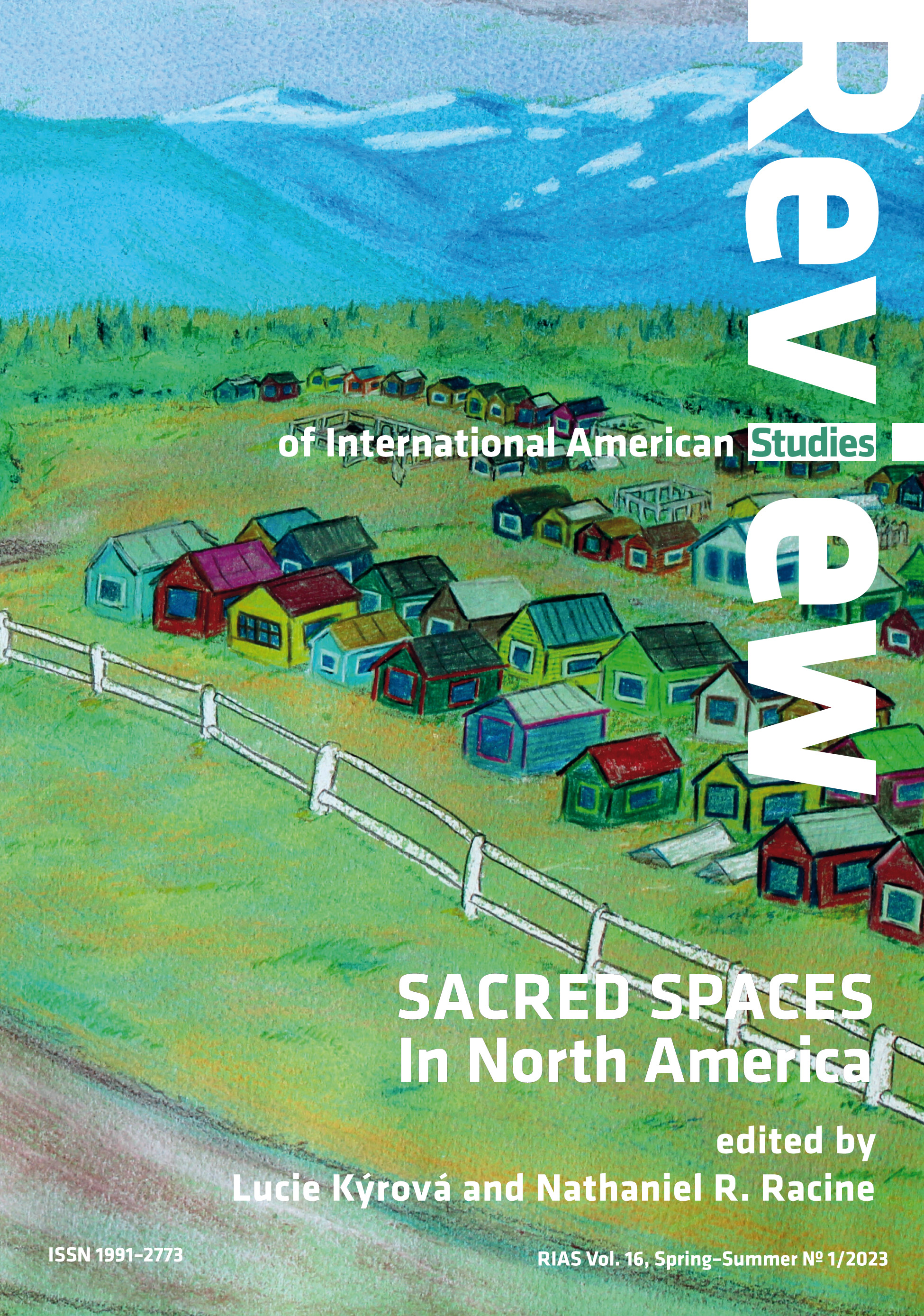“America’s Lost Civilization.” Ancient Apolcalypse with Graham Hancock, season 1, episode 6, 11 Nov. 2022. Netflix, https://www.netflix.com/title/81211003.
Google Scholar
Atwater, Caleb. Description of the Antiquities Discovered in the State of Ohio and Other Western States. Circleville, OH: The American Antiquarian Society, 1820.
Google Scholar
Beck, Glenn, creator. The Glenn Beck Program, Fox News Channel, 2010.
Google Scholar
Bolnick, Deborah A., et al. “Civilizations Lost and Found: Fabricating History – Part Three: Real Messages in DNA.” The Skeptical Inquirer, vol. 36, no. 1, 2012. https://skepticalinquirer.org/2012/01/civilizations-lost-and-found-fabricating-history/. Accessed 22 March 2013.
Google Scholar
Book of Mormon Evidence. https://bookofmormonevidence.org. Accessed 19 June 2022.
Google Scholar
Bush, Jennifer, Reba Kocher, and Bradley T. Lepper. “The Newark Holy Stones: Touchstones for the Truth.” The Public Historian, vol. 44, no. 1, 2022, pp. 78–93.
Google Scholar
Chidester, David and Edward Linenthal, editors. American Sacred Space. Indiana UP, 1995.
Google Scholar
Cincinnati.com. “Christian Prayer Group and Native Americans Face Off: Serpent Mound. https://www.cincinnati.com/story/news/2020/12/21/christian-prayer-group-and-native-americans-face-off-serpent-mound/3992503001/. Accessed 07 June 2022.
Google Scholar
Davis, Edwin Hamilton and Ephraim G. Squier. Ancient Monuments of the Mississippi Valley. Smithsonian Institue, 1848.
Google Scholar
Feagans, Carl. “The Pseudoarchaeology of Glenn Beck.” A Hot Cup of Joe. Available at http://ahotcupofjoe.net/2010/08/the-pseudoarchaeology-of-glenn-beck/. Posted August 21, 2010. Accessed 01 Oct. 2011.
Google Scholar
Feder, Kenneth, et al. “Civilizations Lost and Found: Fabricating History—Part One: An Alternate Reality.” The Skeptical Inquirer, vol. 35, no. 5, 2011. http://www.csicop.org/si/show/civilizations_lost_and_found_fabricating_history_-_part_one_an_alternate_re/. Accessed 22 March 2013.
Google Scholar
Foundation for Apologetic Information and Research. 2005–2013. “The FAIR Wiki:Defending Mormonism.” Available at http://en.fairmormon.org/Mormonism_and_apologetics. Last modified May 4, 2012, .Accessed 22 March 2013.
Google Scholar
Friends of Serpent Mound. https://www.serpentmound.org. Accessed 19 June 2022.
Google Scholar
Hollan, Amy. “Glenn Beck Mention Boosts Newark Earthworks.” Newark Advocate. 20 Aug. 2010
Google Scholar
Hopewell Ceremonial Earthworks. “Nomination to the World Heritage List by the United States of America.” Ohio, United States of America, 2022.
Google Scholar
HypeStat.com. Search query for http://www.lostcivilizationdvd.com/index.html. Accessed 17 March 2013.
Google Scholar
Indigenous Wonders of Our World: The Hopewell Ceremonial Earthworks. April 2022, The Ohio History Connection, Columbus, Ohio.
Google Scholar
Jones, Lindsay and Richard D. Shiels, editors. The Neward Earthworks: Enduring Monuments, Contested Meanings. U of Virginia P, 2016.
Google Scholar
Kehoe, Alice Beck. “The Lost Civilizations of North America Found[…]Again!” Reports of the National Center for Science Education (RNCSE), vol. 31, no. 2, 2011, pp. 2.1–2.3.
Google Scholar
Lepper, Brad. “Statement about “The Lost Civilizations of North America” DVD.” Ohio Archaeology Blog. http://ohio-archaeology.blogspot.com/2010/12/commentary-on-lost-civilizations-of.html. Posted December 16, 2010. Accessed 01 Oct. 2011.
Google Scholar
Lepper, Brad. “The Archaeoastronomy of the Newark Earthworks.” Ohio History Connection Archaeology Blog. https://www.ohiohistory.org/the-archaeoastronomy-of-the-newark-earthworks/. Posted December 22, 2013. Accessed 16 May 2023.
Google Scholar
Lepper, Bradley T., et al. “Civilizations Lost and Found: Fabricating History – Part Two: False Messages in Stone.” The Skeptical Inquirer, vol. 35, no. 6, 2011. http://www.csicop.org/si/show/civilizations_lost_and_found_fabricating_history_-_part_two_false_messages/. Accessed 22 March 2013.
Google Scholar
National Historic Preservation Act 36 CFR 800.4 (c)(1). “Code of Federal Regulations.” National Archives and Records Administration. https://www.ecfr.gov/current/title-36/chapter-VIII/part-800?toc=1. Accessed 18 May 2023.
Google Scholar
National Park Service. “Historical Figures in Hopewell Archeology.” https://www.nps.gov/hocu/learn/historyculture/historic-figures-in-hopewell-archeology.htm. Accessed 19 June 2011.
Google Scholar
Ohio History Connection. “Newark Earthworks.” https://www.ohiohistory.org/visit/browse-historical-sites/newark-earthworks/. Accessed, 06 June 2022.
Google Scholar
Ohio History Connection. “The archaeoastronomy of The Newark Earthworks.” https://www.ohiohistory.org/the-archaeoastronomy-of-the-newark-earthworks/. Accessed 01 June 2022.
Google Scholar
Ohio History Connection. “About Us” https://www.ohiohistory.org/about-us/. Accessed 19 June 2021.
Google Scholar
Pember, Mary Annette. “‘Crazy Theories Threaten Serpent Mound, Demean Native Heritage’ A Story about Serpent Mound.” Indian Country Today, 13 Sept. 2018, https://ictnews.org/archive/crazy-theories-threaten-serpent-mound-demean-native-heritage. Accessed 17 May 2023.
Google Scholar
Smoot, Steven. “The Lost Civilizations of North America Introduction.” Conference Paper presented at the Ancient American History Conference, Salt Lake City, UT, 01 April 2011, http://www.youtube.com/watch?v=51Xoj5g5S1g. Posted 24 April 2011. Accessed 01 Oct. 2011. Changed to private.
Google Scholar
Sumner, Michaela. “OHC offers Moundbuilders Country Club $1.6 M for lease amid Hopewell site legal battle.” Newark Advocate, 20 May, 2020, https://www.newarkadvocate.com/story/news/2020/05/19/ohio-history-connection-offers-country-club-1-6-m-lease-amid-legal-battle/5222177002/ Accessed 19 June 2022.
Google Scholar
The Lost Civilizations of North America. DVD. 2009. Dir. Rick Stout. Highland, UT: NA Discoveries and Acuity Productions.
Google Scholar
The Lost Civilizations of North America, Website. 2010. http://www.lostcivilizationdvd.com/index.html. Accessed 21 May 2013.
Google Scholar
Unite the Collective. “Big Changes Inbound” Morning Coffee with Rion. https://www.youtube.com/watch?v=KRhMvZBdt_c 14 May 2022. Accessed 18 May 18, 2023.
Google Scholar
Wallace, Chief Glenna. “Foreword.” The Newark Earthworks: Enduring Monuments, Contested Meanings, edited by Lindsay Jones and Richard Shiels, U of Virginia P, 2016, pp. ix-xi.
Google Scholar
Warren, Stephen and Randolph Noe. “The Greatest Travelers in America”: Shawnee Survival in the Shatter Zone.” Mapping the Mississippian Shatter Zone, edited by Robbie Etheridge and Sheri M. Shuck-Hall. U of Nebraska P, 2009, pp. 163–187.
Google Scholar
Warren, Stephen. “Coalescence and Diaspora at Lower Shawnee Town, 1730–58.” Conference paper, delivered at the 126th Annual Meeting American Historical Association, Jan. 2012.
Google Scholar
Wolfe, Patrick. “Settler colonialism and the elimination of the native.” Journal of Genocide Research, vol. 8, no. 4, 2006, pp. 387–409.
Google Scholar
World Heritage Ohio. “Serpent Mound.” http://worldheritageohio.org/serpent-mound/ Accessed, 07 June 2022.
Google Scholar
WYSO. “Conflicting Stories About the Serpent Mound: WYSO Curious Digs In.” https://www.wyso.org/arts-culture/2014-12-26/conflicting-stories-about-the-serpent-mound-wyso-curious-digs-in Aired 26 December 2014. Accessed, 6/19/22.
Google Scholar
Zeisberger, David. History of the Northern American Indians. Edited by Archer Butler Hulbert and William Nathaniel Schwarze. Columbus, Ohio, State Archaeological and Historical Society, 1910.
Google Scholar


 https://doi.org/10.31261/rias.13857
https://doi.org/10.31261/rias.13857

 10.31261/RIAS
10.31261/RIAS